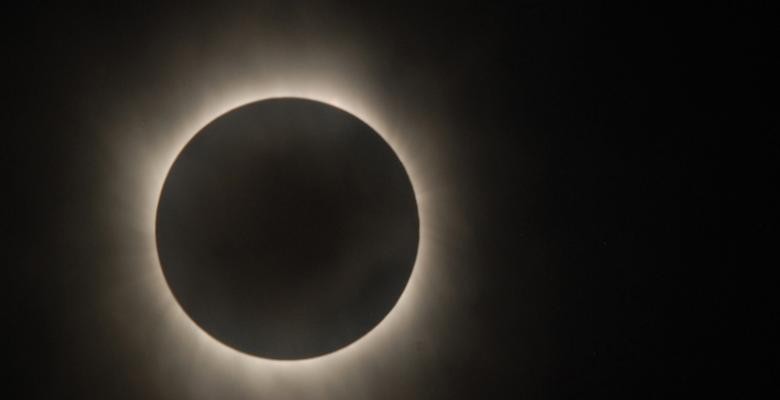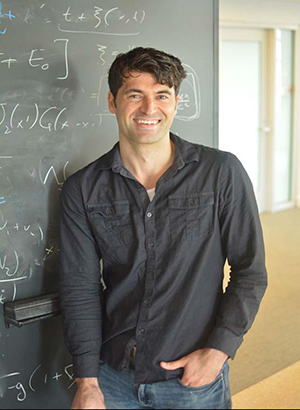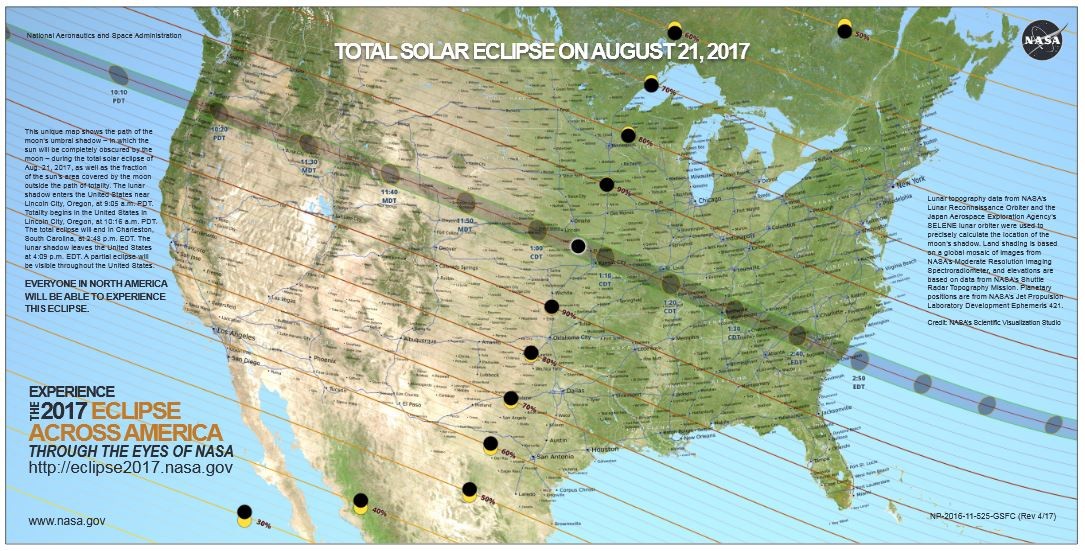5 Questions: Astronomer David Kipping on The Great American Eclipse
On August 21, millions of people along a path stretching from Oregon to South Carolina will bear witness as the moon slips over the entire face of the sun, obscuring its light and allowing only the glow of its outer atmosphere to mark its place in the sky.

For many along the path of totality, the Great American Eclipse will be a breathtaking, once-in-a-lifetime light show. It will be the first total solar eclipse visible from the continental United States since 1979 and the first time that the path of totality exclusively crosses the continental U.S. from coast to coast in more than 100 years.
The 70-mile-wide path of totality will cross the country from west to east, starting at 9:05 a.m. PDT in Lincoln Beach, Oregon, and sweep across portions of 13 other states ending in South Carolina at 2:46 p.m. EDT as it slips along a barrier island of the Santee Coastal Reserve just east of McClellanville.

“It’s an awe-inspiring experience that everyone should try to see once before leaving this Earth; a moment when you are confronted with your cosmic stature from an astronomical perspective,” said David Kipping, assistant professor of astronomy. Fascinated by the solar system since childhood, Kipping leads the Cool Worlds Lab at Columbia and runs a YouTube channel discussing his research and related science.
Q. What is a total solar eclipse and how does it differ from a solar eclipse?
A. By “total” solar eclipse we mean that the entire disk of the sun will be blocked out for a short time. Total solar eclipses happen when the moon, during its normal orbit, falls precisely between the sun and Earth, completely blocking the sun’s light from the vantage point of some location on Earth. While the sun is 400 times bigger than the moon, it is also, coincidentally, just about 400 times farther away, so to a stargazer on Earth, the two often appear to be the same size. The moon’s size appears to vary depending on where it is in its orbit. As a result, total solar eclipses—which happen only when the moon is at the exact place in its orbit where it appears to be the same size as the sun and when it falls precisely between the sun and Earth—account for only about 30 percent of solar eclipses. More often we get partial eclipses.
Q. What makes this eclipse different and a must-see event?
A. Total solar eclipses seem much more rare than they really are because they last such a short time and less than half a percent of the Earth’s surface falls in the path of any given eclipse’s shadow. The chance that it will naturally pass over exactly where you are, is small, at least when compared to the typical human lifetime. If you chased eclipses across the planet though, which some people do, you could catch several per year because the Earth as a whole gets a total solar eclipse every 18 months on average. For those not willing to sail to the middle of the Pacific Ocean to catch an eclipse, however, total eclipses happen only once every 300 years, on average, at any given location (chart). During The Great American Eclipse, all Americans will see at least a partial eclipse.
Q. What can we expect to see on August 21?
A. A solar eclipse has several stages. You’ll first see the moon begin to cover the western limb of the sun. Next, over a period of about an hour, the moon will obscure more and more of the sun, which will slowly become a progressively narrower crescent. About 15 minutes before totality, the light level will begin to fall noticeably and with increasing rapidity. The landscape will take on a gray-blue hue. Animals may become anxious as the sunlight dims and day turns into night. Plants have been observed closing up and some human behavior is even affected. About five minutes before totality, the shadow cast by the moon causes the western horizon to darken, like when you see a giant thunderstorm about to blow in. You may notice the temperature drop and ripples of light flowing across the ground. In the last seconds before complete darkness, if you’re in the path of totality, only a sliver of the sun will remain, appearing thinner and thinner. A final bright spot can be seen sitting upon a circle of light, resembling a diamond ring on your finger until, finally, all that is left is the glow of the sun’s atmosphere surrounding a sphere of darkness. If you didn’t know it was coming, you can imagine looking out the window and thinking perhaps the end of days was upon us.
Q. What can we learn from solar eclipses?
A. Eclipses actually play a major role in cutting-edge astronomical research. In particular, the most successful method for discovering planets orbiting other stars, so-called exoplanets, is to catch them eclipsing their star. About one percent of planetary systems should have the right alignment for eclipses to happen, and indeed that’s about what we see. Once per orbital period of the planet, it eclipses its parent star, thereby blocking out some of the starlight for a few hours. The planets are too far away and too small for us to directly see, even with powerful telescopes, but these eclipses betray the presence of the planet because astronomers are very good at precisely measuring the brightness of stars. Right now my group at Columbia uses the method to not only look for new planets, but their moons.
Q. Does that mean you could view Earth this way from other places in the solar system?
A. Yes. It’s also fun to think that the Earth’s presence is revealed to other hypothetical civilizations in this way. Any stars and distant planets lying within about one degree of the orbital plane of the solar system would observe the Earth transit the sun every 365 days. With precise telescopes, any intelligent life existing on those stars or planets could tell our planet’s size, detect our atmosphere, signatures of life and even industrial pollutants in our atmosphere. Whether we like it or not, advanced civilizations lying along this special direction would probably know we’re here.
